On The Fly
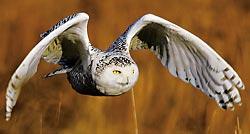
PAUL BANNICK DOESN'T pursue his birds. He waits for them, sometimes for hours in sub-freezing weather, after careful research of their habitat, habits and life cycles.
"After eight hours straight watching the irruption of snowy owls we had here last winter, I knew what they were going to do when they took off," he recalled.
The result is photography that rises above the ordinary. They capture not just the beauty of our feathered friends, but the personalities of the astonishing variety that fly through Seattle and Washington.
"I try to take photographs that say, 'This is who this is,' " explains Bannick, who is development director of the environmental group Conservation Northwest. "Most of my work is in learning about the subject."
Bannick, 42, developed his love for the natural world during a Bellevue boyhood. Even then he became alarmed at the disappearance of suburban woods and wetlands.
His Northwest roots are deep. His grandfather, Claude, was a Seattle police chief and King County sheriff who gained fame shutting down bordellos — developers were trying to build a 500-room brothel on Beacon Hill in 1911 — and then ran unsuccessfully for governor on a prohibition platform. His father, William, was editor of Boeing News.
Bannick knew exactly what he wanted to do when he grew up — stay out in the backyard where the wild things are — but was told, of course, "You'll never make a living." So he dutifully studied finance and marketing at the University of Washington, joined Paul Brainerd's desktop-publishing pioneer Aldus, then went on to Adobe.
After 15 years in software, Bannick wasn't rich, but financially secure enough to be able to afford to return to his first love, the environment, by working for nonprofits. He brought his financial skills to their cause while turning his lifelong interest in wildlife photography into true passion. His Web site is www.paulbannick.com, and his photos illustrate the KPLU "Bird Note" Web site (www.birdnote.org).
That means frequently getting up before dawn to study the birds he wants to capture with his camera. Before then he will have read about their background and the local botany, anticipating where they will nest and eat. Then he watches for hours.
"The best photos are those you see in your head before you see it in your lens," he says. "I miss shots when I don't see them coming."
The presence of wildlife in general, and birds in particular, is one of the best arguments to persuade the public to keep natural landscapes, he says. "For most of the threatened places in America, there's an owl that can serve as ambassador."
An example are Seattle's undeveloped ravines dominated by alder and big leaf maple. Not only are dead or decaying maples ideal habitat for the screech owl, but the fragments of habitat are too small for the competing barred owl.
Birds also illustrate the unity of the world's ecosystems. Seattle's brilliantly colored Western tanagers are migrants from Latin America. "For some people, that's the closest to South America they're ever going to get."
While Bannick goes far afield, some of his best pictures are shot in Discovery Park near his home. He's photographed the saw-whet owl, snowy owl, hairy woodpecker, kingfisher and bald eagle in Seattle, as well as wrens, sparrows, finches, ducks, seabirds, warblers and many others.
He switched to digital photography 18 months ago to avoid chemical waste. He prefers early or late low light — "most photographs taken after 11 a.m. are worthless" — and usually uses a tripod. He prefers a combination of manual and automatic controls, often setting depth-of-field or shutter speed while letting the camera calculate the rest.
His primary lenses are a 300 mm, 500 mm, 600 mm, a 100 mm for close-in shots, a 24-70 zoom for landscapes, and a 70-200 zoom for flexibility and larger animals.
Be patient, try and try again, and let the telephoto do the work, he advises. "Get the longest lens you can afford or rent it. Too many people end up chasing the animal around the landscape, trying to get close."
Bill Dietrich is a Pacific Northwest magazine staff writer. Paul Bannick can be reached at paul.bannick@gmail.com.

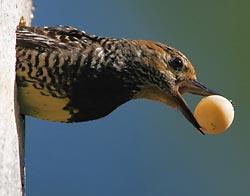
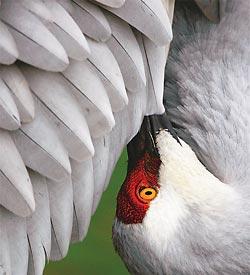
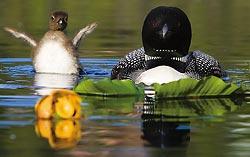
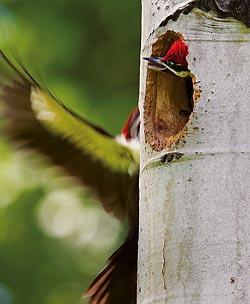

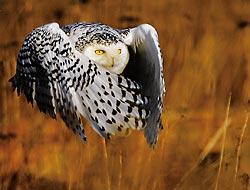
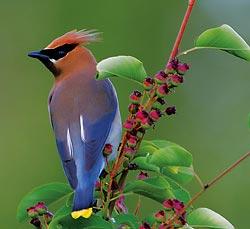

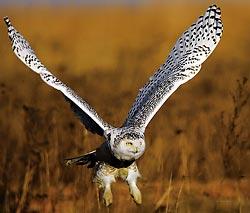
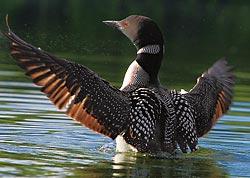
Now hear this
![]()
![]()
Paul Bannick will make two appearances to show his images and talk about them in September:
"Birds of Diverse Forest Habitats" with Conservation Northwest, REI Flagship Seattle Store, 222 Yale Ave. N., 7 p.m., Sept. 12.
"Paul Bannick's Images of Birds with a Focus on Owls and Woodpeckers," Burke Museum, University of Washington campus, 7 p.m., Sept. 13.